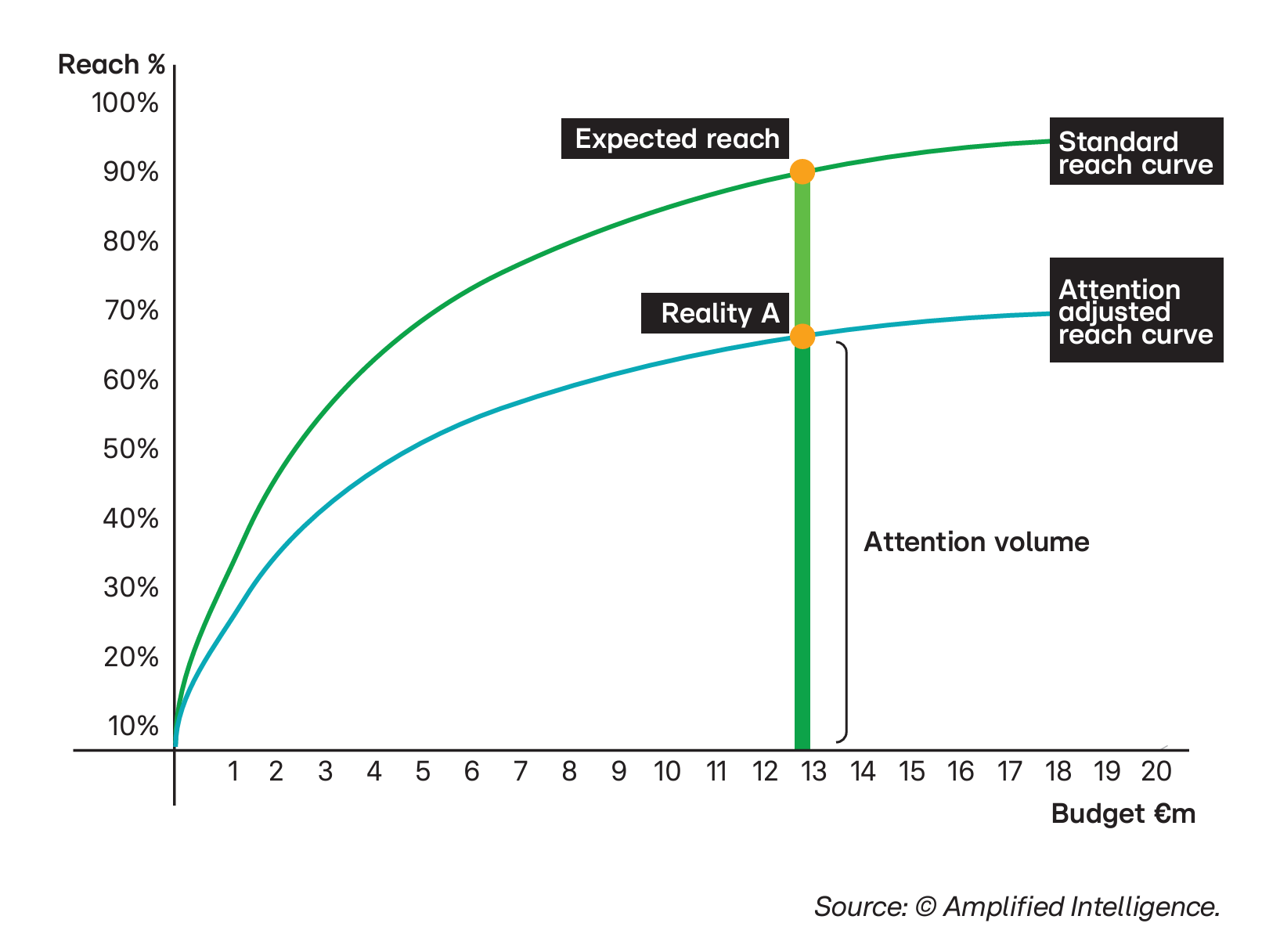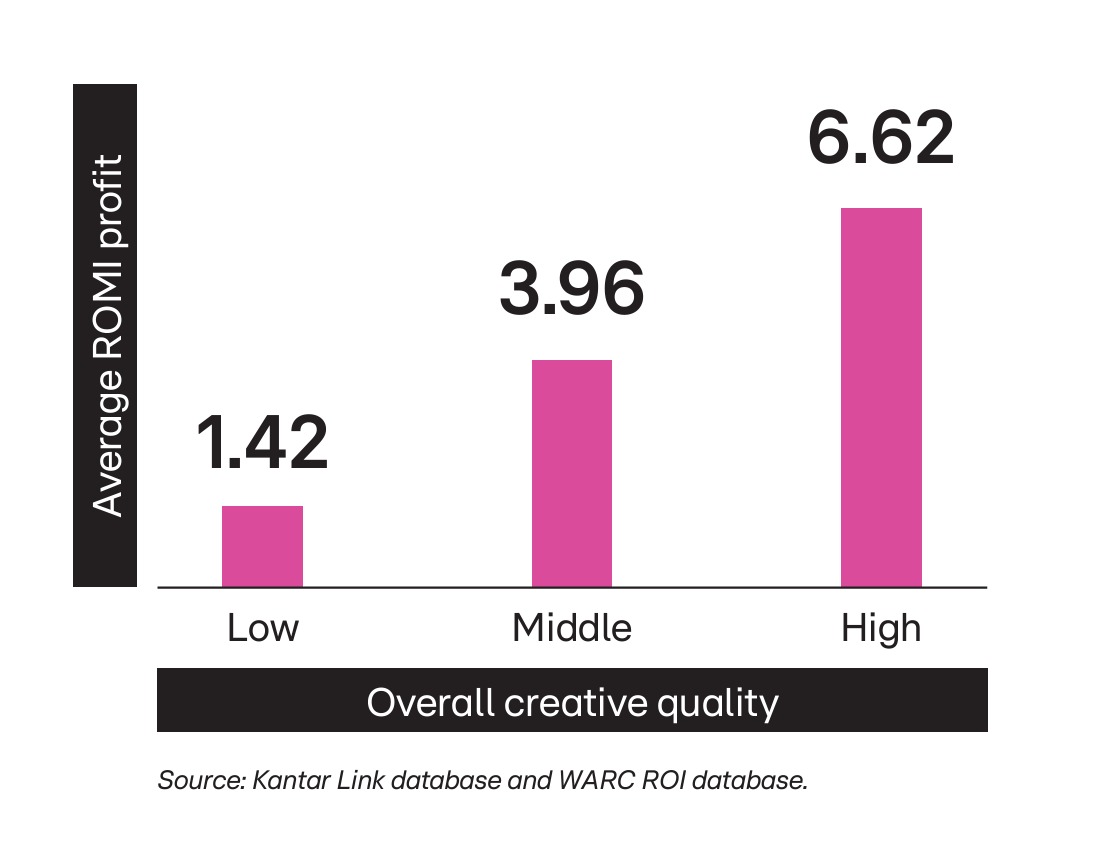From viewability to attention
The advertising industry is experiencing significant shifts in measurement and strategies. In this article we take a look at two crucial developments in how to measure advertising success. First, we discuss the transition from prioritising attention over viewability, a trend set in motion by Karen Nelson-Field, founder of Amplified Intelligence. Then we examine the measurement of creativity’s impact on ROI, with insights drawn from a recent study carried out by Kantar’s Jane Ostler, titled “Creativity Drives Business.”
The paradigm shift
For years, viewability has been the holy grail of ad measurement. However, it has its limitations. It does not provide a clear picture of actual human engagement. Some vendors have gamified this metric, necessitating a fundamental change. The key metric of our time is “time-inview,” measuring how long people genuinely engage with ads. This new approach falls into two categories: human data and proxy device data. Human data offers behavioural insights but lacks scalability. Proxy device data, though highly scalable, is not always accurate. The future lies in combining both. We are shifting from measuring “outward” factors like screen time to measuring “inward” engagement, focusing on whether people actively watch ads.
Startlingly, 85% of ads fail to capture 2.5 seconds of viewers’ attention, according to an analysis of 130,000 ad views from 1,150 brands. To optimise attention time, we must also consider variations across platforms and media types.[1]
Creative vs placement
Karen Nelson-Field, founder of Amplified Intelligence, joined Nicolas Grand, SVP Transformation, Global Investment at Omnicom Media Group, on a panel at the RTL Beach, to discuss the importance of attention. Here are some of their insights from that discussion.
The advertising industry is experiencing significant shifts in measurement and strategies. In this article we take a look at two crucial developments in how to measure advertising success. First, we discuss the transition from prioritising attention over viewability, a trend set in motion by Karen Nelson-Field, founder of Amplified Intelligence. Then we examine the measurement of creativity’s impact on ROI, with insights drawn from a recent study carried out by Kantar’s Jane Ostler, titled “Creativity Drives Business.”
Historic studies such as the one carried out by Nielsen in 2017, suggest that creativity plays a dominant role in driving engagement, with a 51% share. However, this view is shifting. Nicolas Grand highlights the potential of broadcasting to leverage attention data and prove its superior attention delivery across platforms. Creative content remains essential for conveying brand identity, but it does not single-handedly capture attention within a platform. Media placement is the primary catalyst for this, and the hierarchy of attention places media at the forefront.
In the quest for better ROI, attention is emerging as an essential layer that augments CPM, offering advertisers more value.
The concept that not all reach is created equal hinges on the nuanced notion of attention decay. How individuals interact with ads, their speed of disengagement, and various factors unique to each platform, format and ad length, collectively influence the actual reach an advertiser attains. Understanding the intricacies of this interaction is crucial for making informed advertising decisions.[2]
“The potential that the broadcasting ecosystem has is to use attention data to effectively show how broadcast delivers more attention to other platforms.” Nicolas Grand, SVP Transformation, Global Investment, OMG
How much actual reach do you get for your dollar?
A traditional reach curve is down weighted when accounting for attention volume.

The influence of creativity on profit
Kantar Insights, in collaboration with LVMY&R, conducted a study in 2022, demonstrating that creativity is a source of efficiency. Among 56 award-winning campaigns, 96% ranked in the top 33% for media, brand, or commercial impact. These campaigns are not just effective; they also excel in media impact (95%), brand impact (67%) and commercial impact (55%).[3]
These results indicate that 93% of effective campaigns, (as recognised by Effie awards), are also creative, showcasing high levels of engagement and approval among consumers. These campaigns consistently rank in the top 30% of the most liked and engaging campaigns within the Kantar Insights database, which includes over 2,700 cases. Furthermore, 73% of these campaigns have a direct impact on business, either in the short or long term.
Kantar Link’s advertising testing methodology evaluates campaign performance across three dimensions: media impact, commercial impact and brand impact.
Driving profit
At a time of increasingly constrained marketing budgets, the quest for profit is paramount. Kantar and WARC present evidence highlighting the critical role of creative quality in enhancing ROI. Creative and effective ads have the potential to generate over four times as much profit, as depicted below.[4][5]
As the economy fluctuates, creativity often faces budgetary challenges. A study conducted by LIONS State of Creativity reveals that a significant number of marketers have experienced reduced investments in creativity and brand marketing due to economic pressures. Additionally, many feel the pressure to demonstrate the effectiveness of creativity within their organisations. Only 12% of brand marketers express confidence in convincing their CFO to invest in creativity and brand building. However, research from WARC and Kantar underscores the pivotal role of high-quality creative work in driving ROI, four times higher than low-quality creative work.
Influence of AI on measuring creativity
AI is reshaping advertising. At Kantar, AI assists in ad testing and optimisation. The key is the AI’s foundation – a vast, high-quality dataset of over 25,000 highly creative ads. The convergence of media and technology is driving the need for brands to deliver performance and for performance to enhance brand identity. Establishing connections between different aspects of a campaign is crucial. The enduring belief is that creativity remains at the core of campaign effectiveness and brand success.
In conclusion, the future of advertising success lies in shifting from viewability to attention, recognising the nuanced interplay of creative content and media placement, and harnessing the power of creativity to drive profitability. These transformations promise a brighter future in the ever-evolving world of advertising.[6]
Creative and effective ads generate more than
four times as much profit

Sources
1 https://www.youtube.com/watch?v=Z1Bj7G4oP6s&t= 1159s
2 https://www.youtube.com/watch?v=Z1Bj7G4oP6s&t =1276s.
3 https://www.kantar.com/fr/inspirations/publicitemedias-et-rp/2023-effie—creativity-is-business.
4 https://www.aacc.fr/actualites-et-evenements/ gouvernance/creativity-business.
5 https://www.kantar.com/inspiration/advertising-media/ the-art-of-proof-how-creative-quality-drives-profit.
6 https://www.youtube.com/watch?v=mMkSX5VdAYg&t =567s



















